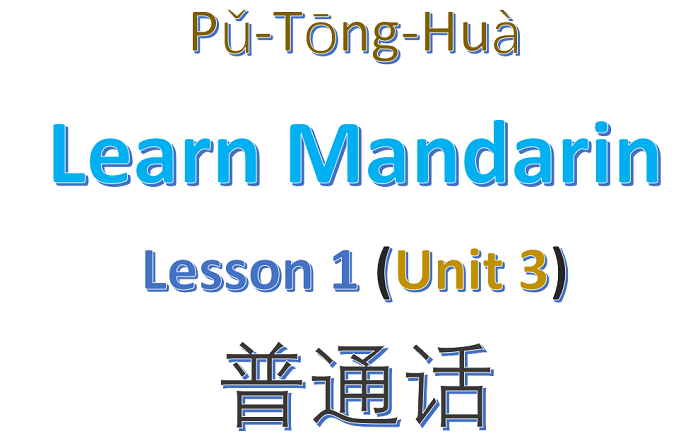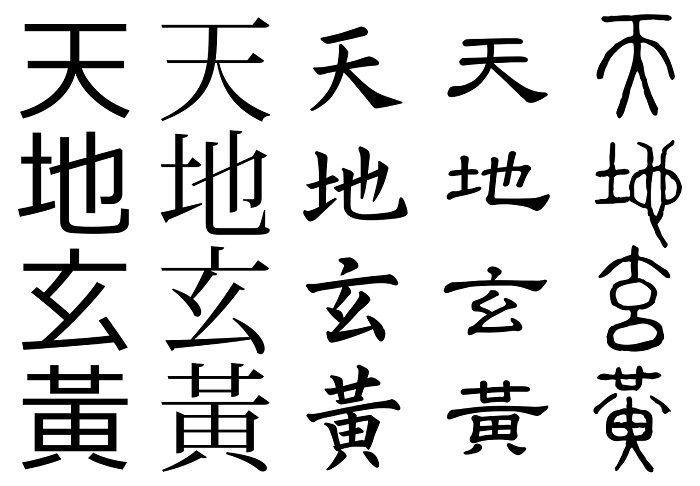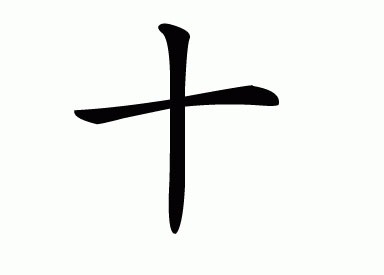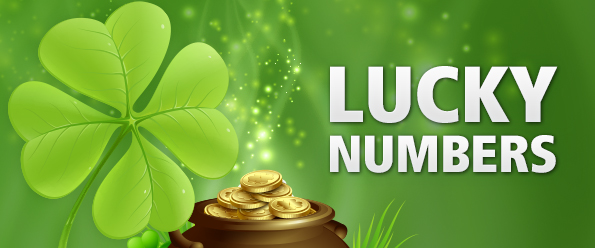Welcome to Lesson 1 in Unit 3 of SKMLifestyle’s Chinese Language course to learn Mandarin online. In this lesson, we’ll learn Chinese numbers and certain dynamics revolving around them. I’ll introduce you to counting in Chinese. Moreover, since I wish to teach you how to learn Chinese fast, I’ll introduce several related characters. We’ll also go through quite a few Chinese lucky numbers (and unlucky numbers as well). 🙂

Make sure that you continually keep revising all the previous lessons (check out all the lessons from Unit 1 and Unit 2).
Counting in Chinese with basic Chinese numbers
Here is the table for you to check out the important Chinese numbers. Once you are comfortable with these numbers, you can count up to 10,0000,000 and beyond without much difficulty. A more detailed explanation for the characters/numbers is presented after the table. Enjoy counting in Chinese.
| Arabic numerals | Chinese | Pinyin |
|---|---|---|
| 1 | 一 | Yī |
| 2 | 二 | Èr |
| 3 | 三 | Sān |
| 4 | 四 | Sì |
| 5 | 五 | Wǔ |
| 6 | 六 | Liù |
| 7 | 七 | Qī |
| 8 | 八 | Bā |
| 9 | 九 | Jiǔ |
| 10 | 十 | Shí |
| 11 | 十一 | Shí yī |
| 12 | 十二 | Shí èr |
| 13 | 十三 | Shí sān |
| 14 | 十四 | Shí sì |
| 18 | 十八 | Shí bā |
| 19 | 十九 | Shí jiǔ |
| 20 | 二十 | Èr shí |
| 21 | 二十一 | Èr shí yī |
| 22 | 二十二 | Èr shí èr |
| 30 | 三十 | Sān shí |
| 31 | 三十一 | Sān shí yī |
| 40 | 四十 | Sì shí |
| 41 | 四十一 | Sì shí yī |
| 42 | 四十二 | Sì shí èr |
| 50 | 五十 | Wǔ shí |
| 60 | 六十 | Liù shí |
| 90 | 九十 | Jiǔ shí |
| 99 | 九十九 | Jiǔ shí jiǔ |
| 100 | 一百 | Yī bǎi |
| 200 | 两百 | Liǎng bǎi |
| 999 | 九百九十九 | Jiǔ bǎi jiǔ shǐ jiǔ |
| 1000 | 一千 | Yī qiān |
| 1 100 | 一千一百 | Yī qiān yī bǎi |
| 2000 | 两千 | Liǎng qiān |
| 10 000 | 一万 | Yī wàn |
| 1 000 000 | 一百万 | Yī bǎi wàn |
| 100 000 000 | 一亿 | Yī yì |
china number 1 – how to write one in Chinese?
Well, it’s just a plain horizontal line 一 (Yī, 1). Moreover, this is one of the easiest Chinese numbers (and probably the easiest Mandarin character too).
number 2 in chinese
This is another simple Character – just put two horizontal lines together, 二 (Èr, 2). Make sure to notice that the upper line is a bit shorter than he bottom one.
3 in chinese
Alright, now learning Chinese might look like a piece of cake. Well, all I am trying to say is that 3 is just three horizontal lines put together, 三 (Sān, 3). Moreover, the length of top and bottom lines are the same and the middle line is a bit shorter.
number 4 in chinese
Do you remember lesson 2 from Unit 1 when I told you the name of Sichuan province of China? I mentioned that Sichuan basically means 4 rivers. Anyways, just to repeat, 4 is written as 四 (Sì).
5 in mandarin
Well, counting in Chinese may look a bit complicated here. 5 is written as 五 (Wǔ). Don’t be confused with the Chinese surname Wu (Wú, 吴). That’s the reason, I don’t easily trust the romanization of the Chinese Characters. I mean without learning proper Chinese tones, you can often get an incorrect interpretation of a Chinese character.
six in mandarin
Well, 6 is written as 六 (Liù). Again, a famous Chinese surname is Liú (刘). Make sure to not mix 六 and 刘 together. Btw, apart from the surname, 刘 could also mean super/excellent.
chinese number 7
The Chinese number 7 is written as 七 (Qī). The Mandarin Chinese is often regarded as a language of compound characters where we combine different characters/syllables to form new characters, and 7 is just not an exception. I’d show you some of the Chinese characters where you’d see 7 gracefully placed in the character-
- Change (化, Huà)
- China (华, Huá)
- Flower (花, Huā)
- Foreigner (老外, Lǎowài)
- Death (死, Sǐ)
- Xiong (熊, Xióng – a family name)
Please not that 华 is a very important character in Chinese. It has quite a few meanings, including “China”. The character comes in the official names of both the mainland China and Taiwan. Anyways, I’ll have a separate lesson to introduce you the name of China.

number 8 in Chinese
The number 8 is written as 八 (Bā). A little change in the shape of 八 gives us several characters. Look at the following characters, do you see any similarities with 八?
- People (人, Rén)
- Fire (火, Huǒ)
- Large (大, Dà)
- Too much (太, Tài)
- Sky (天, Tiān)
9 in mandarin
Well, the number 9 is written as 九 (Jiǔ). There is a basic form 儿 (Er) that’s used to form so many characters in Chinese. Let me show you some of the related Chinese characters.
- Child (儿, Er)
- Four (四, Sì)
- West (西, Xī)
- RMB (Yuan) (元, Yuán)
- Garden (园, Yuán)
- Hang (-zhou ) (杭, Háng)
- Sichuan (四川, Sìchuān)
Can you find the pattern 儿 in the above character/words? If you want to learn Chinese fast, then you need to start recognizing such patterns at the earliest. This could help a lot in improving Chinese writing as well.

10 in chinese
It should be quite easy to remember “ten” as the number 10 is written as 十 (Shí) – very similar to the plus sign in mathematics (+). A slight modification to 十 gives us so many new and basic Chinese characters, for example:
- Earth/Soil (土, Tǔ)
- Scholar/warrior (士, Shì)
- Ye (叶, Yè) – a Chinese family name (surname)
- Farm (田, Tián)
- 1,000 (一千, Yī qiān)
Mandarin Chinese numbers 1-10, 1-20, 1-100
If you know 1-10 Chinese numbers, it should be fairly simple to write down the Chinese numbers of higher denominations. Here are some of the examples:
- 11 = 10+1 = 十一 (Shí yī)
- 12 = 10+2 = 十二 (Shí èr)
- 20 = 2*10 = 二十 (Èr shí)
- 21 = 2*10+1 = 二十一 (Èr shí yī)
- 22 = 2*10+1 = 二十二 (Èr shí èr)
This list continues until 99 (九十九, jiǔ shí jiǔ) and then we have 一百 (Yī bǎi – 100). Please not that 百 also means 100, but we usually don’t say 百 alone. If you have to say 100, you’d say 一百 (one hundred). It’s also worth mentioning that 200 is generally not written as 二百, it’s usually written as 两百 (Liǎng bǎi).
两 and 二 are both used to refer to the number 2/two. But there are substantial differences in their usage, and I’ll have at least one dedicated lesson to bring up those differences. Hold on for a while.
One thousand in Chinese is written as 一千 (Yī qiān, 1,000) and two thousand is 两千 (Liǎng qiān, 2,000).

Chinese lucky and unlucky numbers
China is a country with loads of old traditions. Obviously, there are a variety of ways to represent fortunate and unfortunate things. For example, there are certain numbers that are considered to be the lucky number, and then there are quite a few Chinese numbers that are unlucky numbers. In general, 6, 8 and 9 are considered to be the Chinese lucky numbers. The number 4 and 7 are regarded as unlucky numbers. Number 1 is a neutral – neither good nor bad.
The number 4 (四, Sì) is often considered to be unlucky as its pronunciation is similar (but not the same) to the character for death (死, sǐ) . Similarly, 44 or 444 would also be unlucky numbers. You’ll be surprised to know that Chinese people often avoid buying a phone number that contains the digit “4”.
Moreover, the Chinese don’t like stapling a book, print out bundles, handouts, etc. for 4 times. However, 14, 24, etc. are not considered to be unlucky numbers. Let me quickly give you more examples:
- The 7th month July is considered unlucky as July is a “ghost month”
- 6- happiness
- 666 – good luck
- 100 – everything is good/all is well
- 886- good bye (old fashioned)
- 888- become rich
- 10,000– everything is good/all is well (万事大吉, Wàn shì dà jí)
Well, there are lots more cultural stuff that I’ll keep bringing up from time to time in the coming lessons. I hope now you have a much better idea about counting in Chinese.
That’s all in Unit 3 of the Chinese Language course.
Feeling confident about the lessons to learn Chinese fast? Cool! Try the Chinese Language Proficiency Test and see how much you now you know Mandarin Chinese.
You can head to the next lesson of the Chinese Language course or go through the previous lesson again.
If you have any question about the basic Chinese words or Chinese language course, feel free to post in our forum so that others could also contribute and learn. For regular updates like us on Facebook, or follow on Twitter!
If you enjoy to learn Chinese language, or find the write-ups useful, don’t forget to buy me a beer!
Happy mandarin Chinese learning.
Last updated: Wednesday, March 28, 2018